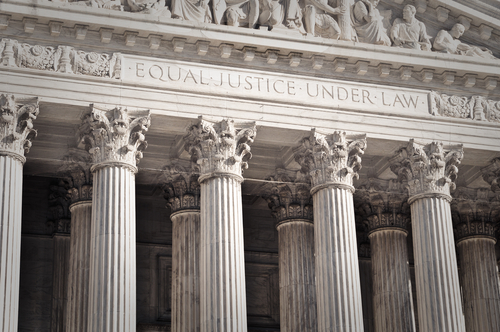
What is a Court of Appeal?
A court of appeal is a judicial system that is responsible for reviewing the decisions made by lower courts; as a result of this function, a court of appeal must decide whether the decision rendered by the lower system (a trial judge or tribunal) should stand or be overturned.
The ability to appeal, in the United States, is denoted as a personal liberty, awarded to each citizen of the United States who is under trial for a criminal offense. Through this liberty granted in the United States Constitution, the party who is labeled as guilty in the lower court typically has a right to appeal the unfavorable decision.
The losing party in a trial decision typically has the ability to show that the tribunal or deciding judge made a legal error in reaching the previous decision or that the jury egregiously violated the law in delivering their verdict.
Structure of the Court of Appeal:
In the majority of jurisdictions in the United States, there is a regional court of appeal as well as a national appeal system. For example, in the United States of America, a common jurisdiction will have a state court of appeals, which is responsible for reviewing cases made in the state’s lower court system. A federal appeal court, in contrast, will handle cases heard in the lower federal court systems.
The federal courts act as intermediaries between trial courts and the highest judicial systems in the land. The court of appeal thus must decide the availability of the appeal on the merits of the request; as a result of this qualification process, the highest court in the system may decline to review the case.
What happens when a case reaches the Court of Appeal?
When a particular case reaches the court of appeal, the judicial system does not typically examine the evidence in the underlying case. The primary focus of the court of appeal is to determine whether an infraction in regards to the legal process was delivered by the judge or jury presiding over the case.
The party who appeals the case, as a result of this process, cannot produce additional evidence or testimonies for consideration. That being said, the one exception to this qualifying rule lies where the judge or jury reaches a factual conclusion that is regarded as unreasonable based on the evidence previously presented. The court of appeal thus, can render a decision at such a point to remand the verdict of the lower court and subsequently overturn the ruling.
What is a Court of Appeal comprised of?
The majority of appeals courts consist of a panel of judges and three justices. The party who bring his or her particular case to the court of appeal, must convince the panel, through the delivery of written briefs and oral arguments, that the lower court system made an error of law when rendering their decision.
To effectively evaluate the appeal, the judges on the panel will interact with various legal professionals to pose questions concerning their arguments; both parties involved in the court of appeal will work together to answer the questions revolving around the previous court decision.





























